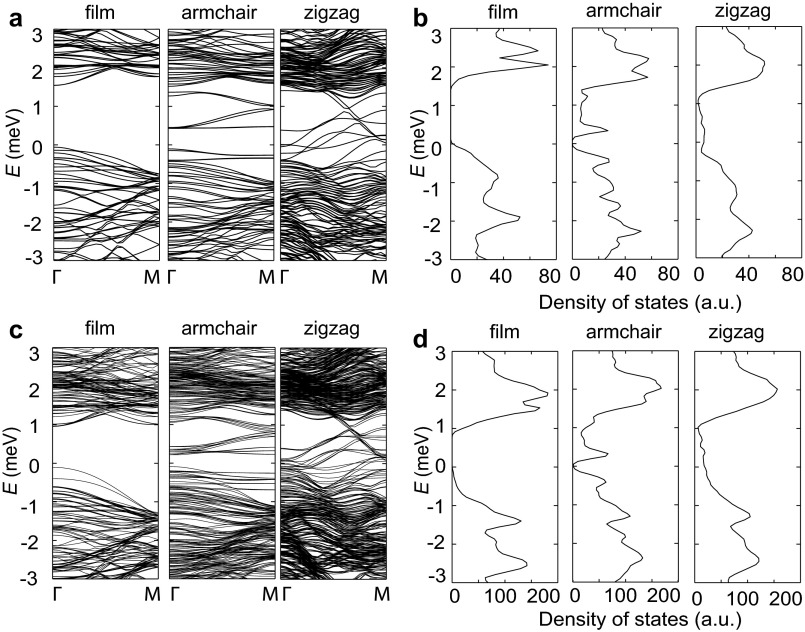Fig. S6.
The one-ML and three-ML MoS2 edge states by DFT calculations. (A) Calculated band structures of the one-ML bulk MoS2 (Left), 1.9-nm-wide MoS2 armchair nanoribbons (Middle), and 3.1-nm-wide zigzag nanoribbons (Right). For all of the configurations, the edge atoms are not saturated by extra atoms, as shown in Fig. 4. (B) Corresponding DOS for MoS2 in A. Calculated band structure (C) and corresponding DOS (D) for three-ML MoS2. Compared with bulk band structure, multiple bands emerge within the band gap for both armchair and zigzag nanoribbons. For the armchair nanoribbons, the energy gaps, ∼0.5 eV for one ML and ∼0.3 eV for three ML, are reduced from the bulk values, ∼1.6 eV for one ML and ∼1.1 eV for three ML. In contrast, the edge bands of zigzag nanoribbons seamlessly connect the bulk conduction and valence bands. Note that the SOC is considered for both cases. SOC reduces the degeneracy of energy bands but does not change the main features of band structures (21).

